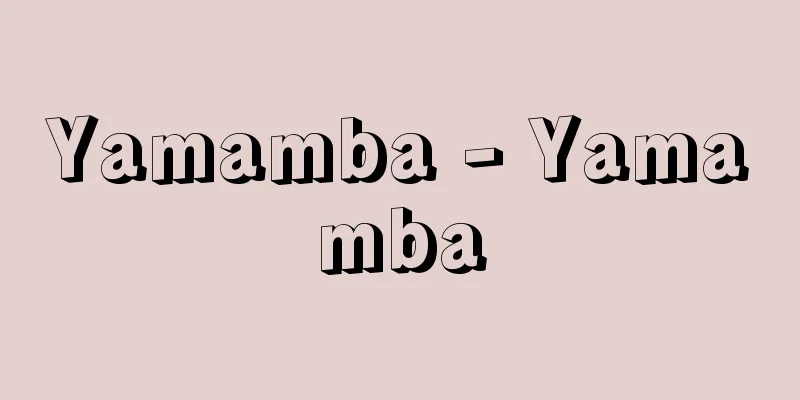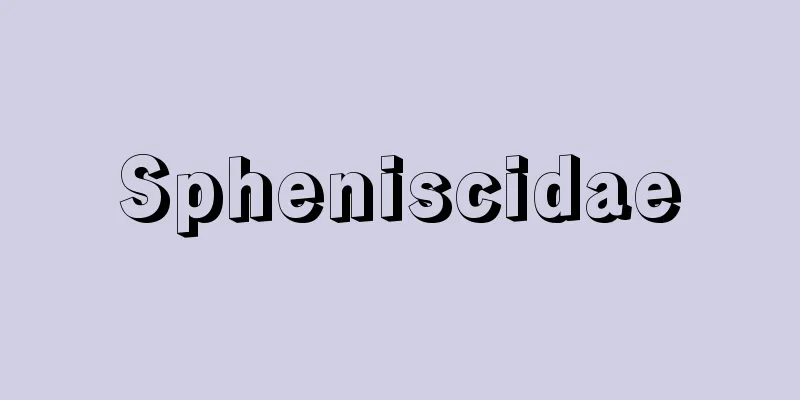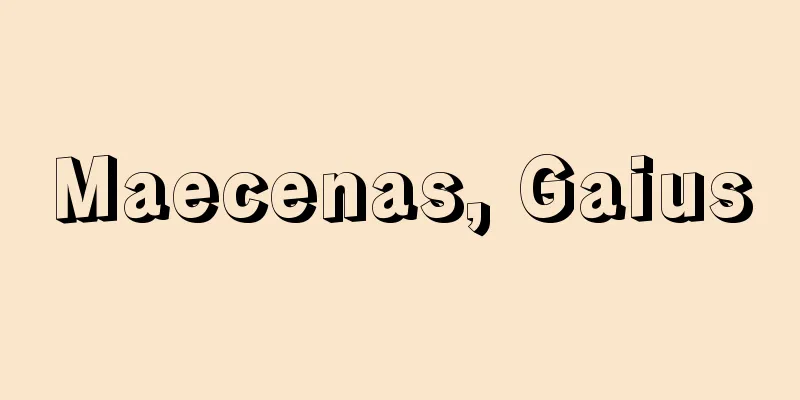Yamamba - Yamamba

[1] 〘Noun〙① = Yamauba (mountain witch) (I) ① ※Yōkyoku Yamauba (c. 1430) “This woman is called Hyakuma Yamauba, and is a playboy without any secret.” ② One of the Noh masks. A demon mask used only in the Noh play “Yamauba.” Yamauba. [2][I] Noh play. Fifth piece. Various schools. Author unknown. A prostitute called Hyakuma Yamauba, who specializes in the Yamauba mountain dance, was on her way to Zenkoji Temple with her attendants when she got lost on the border between Echigo Province (Niigata Prefecture) and Etchū Province (Toyama Prefecture). A woman appeared and guided them to a hermitage, said she was the real Yamauba, and disappeared. As the moon rises, the Yamauba appears as a demon woman, performs the Yamauba Kuma-mai dance, and disappears after showing the scene of a mountain pilgrimage. Yamauba. [2] A type of Kabuki Shosakuto. Based on the Joruri play " Komochi Yamamba. " He perfected the form with "The Four Heavenly Kings Enter Oeyama Mairi " (Tokiwazu, lyrics by the first Segawa Jyoko, music by Tobaya Satocho, commonly known as " Furuyamaba" ), which premiered at the Edo Kiri-za in 1785 , and after works such as "A Mother Raises a Nightingale in the Snow" (Tomimoto, lyrics by the first Sakurada Jisuke) and "The Moon and the Flowers Return Here, My Friend the Bird" (Kiyomoto, music by Sakurada Jisuke II ), he culminated in "Takigio Yukima no Ichikawa" (Tokiwazu, lyrics by Misasaya Jiji, music by Kishizawa Shikisa 5, commonly known as "Shinyamaba"), which premiered at the Edo Kawarazaki-za in 1848. The story revolves around the mountain witch's adventures and the rough actions of Kaidomaru, a son of Sakata Tokiyuki and the courtesan Yaegiri, who is raised by his mother who becomes a mountain witch, and who becomes Raiko's retainer, Sakata Kintoki.Yama-uba [Mountain witch]Source: The Selected Edition of the Japanese Language Dictionary About the Selected Edition of the Japanese Language Dictionary Information |
[1] 〘名〙① =やまうば(山姥)(一)①※謡曲・山姥(1430頃)「これにござ候ふおんことは百ま山姥とて隠れなき遊君にてござ候」② 能面の一つ。能楽「山姥」一曲だけに用いる鬼女の面。やまうば。[2][一] 謡曲。五番目物。各流。作者未詳。山姥の山巡りの曲舞(くせまい)を得意とするひゃくま山姥と呼ばれる遊女が供の者を連れて善光寺に行く途中、越後国(新潟県)と越中国(富山県)の境で道に迷って困っていると、女が現われて庵に案内し、自分がまことの山姥だといって姿を消す。やがて月の出るころ、山姥が鬼女の姿を現わして、山姥の曲舞を舞い山巡りの有様を舞って見せて消え去る。やまうば。[二] 歌舞伎所作事の一系統。浄瑠璃「嫗山姥(こもちやまんば)」によったもの。天明五年(一七八五)江戸桐座初演の「四天王大江山入(してんのうおおえやまいり)」(常磐津。初世瀬川如皐作詞。鳥羽屋里長作曲。通称「古山姥(ふるやまんば)」)で形式を整え、「母育雪間鶯(ははそだちゆきまのうぐいす)」(富本。初世桜田治助作詞)、「月花茲友鳥(つきとはなここにともどり)」(清元。二世桜田治助作)などを経て、嘉永元年(一八四八)江戸河原崎座初演の「薪荷雪間の市川(たきぎおうゆきまのいちかわ)」(常磐津。三升屋二三治作詞。五世岸沢式佐作曲。通称「新山姥」)で集大成された。坂田時行と遊女八重桐との間にもうけた怪童丸が、山姥となった母に育てられ、頼光の家来坂田金時となる筋で、山姥の山巡りから怪童丸の荒事の所作が中心になる。山姥物。
やま‐うば【山姥】出典 精選版 日本国語大辞典精選版 日本国語大辞典について 情報 |
>>: Mountain moray eel (Lathraea japonica Miq.)
Recommend
Kalamazoo ruling - Kalamazoo ruling
...The spirit of this law was later embodied by H...
Motion Picture Producers League of America
...The block booking system brought Hollywood to ...
Junpuu bizoku - Junpuu bizoku
Jun is related to jun and pure, and means honest t...
Greylag goose - Greylag goose
A bird of the Anatidae family (illustration). It b...
Altar - Saidan (English spelling) altar English
An altar is a platform where sacrifices and offer...
Diet - Food
It refers to the habits of animals when they cons...
kleftis (English spelling)
…His vision of the Greek Republic was not limited...
Human - Human
[1] 〘Noun〙① A Buddhist term. One of the six realms...
Provisional refund - Karikampu
(noun) When a court or prosecutor provisionally re...
Paphos (personal name) (English spelling) Paphos
…(1) A king of Cyprus. He fell in love with an iv...
Moreri, L.
…China's first treatise, the Erya, which was ...
Mr. Kawashima
A medieval samurai who was active mainly in Kawash...
leg hammer
…The drilling speed varies greatly depending on t...
Enmeichiku bamboo
...The fruit is almost spherical, about 2.5 mm lo...
Amagasaki Steel Works Dispute
…Although it produced some pioneering examples of...









